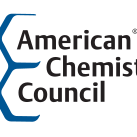Client: American Chemistry Council
Listing of the client in no way affirms the client's support, sponsorship, or validation in any form of Risk Sciences International or the RSI staff member(s) who conducted this project during their stay with RSI or prior to joining the company. This case study is displayed for informative purposes only to demonstrate the capacity of RSI staff members. This case study reveals no proprietary information or information deemed sensitive.
Assessing the Impact of Interstudy Variation in LOAELs on Findings of Low-Dose Additivity in In Vivo Studies of Mixtures
Demonstrating the safe use of chemical mixtures remains a critical challenge in toxicological science. In recent years, studies have suggested that chemicals can exhibit dose additivity—causing a combined effect—even when each chemical individually is below its effect threshold. This project was initiated to investigate whether interstudy variation in Lowest Observed Adverse Effect Levels (LOAELs) might account for some of these findings, particularly in animal studies employing the serial-dilution study design.
Building on published findings by EPA researchers, the client sought to explore whether variability in LOAELs across studies could result in observable effects in mixtures that do not actually follow dose addition principles. The scope included reviewing and refining existing uncertainty estimates in LOAELs and other points of departure (PODs), analyzing known sources of interstudy variability, and developing quantitative models to assess these uncertainties. Additional objectives involved assessing the influence of using alternative PODs such as Benchmark Doses (BMDs) and No Observed Adverse Effect Levels (NOAELs), and exploring how mixed mechanisms of action within chemical groups could alter observed responses.
The client also expressed interest in comparing the implications of these findings to results from specific studies, notably one by Wolansky et al. (2005), which may be pursued as a follow-on project. Overall, the work aims to improve interpretation of low-dose effects in mixture toxicity studies and support more robust regulatory decision-making.
Experts related to this case study
More RSI Case Studies
RSI presents a very small selection of case studies to highlight some of its key work.















